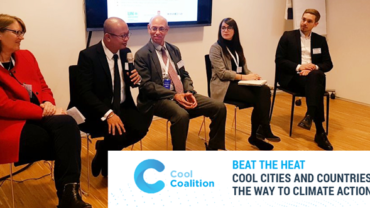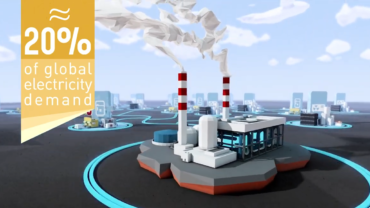Global temperature rise fosters increased need for cooling
The Cooling Emissions and Policy Synthesis Report, which launches today, estimates that some 3.6 billion cooling appliances are currently in use worldwide. Yet, if cooling is provided to everyone who needs it – and not just those who can afford it – this would require as many as 14 billion cooling appliances by 2050.
The COVID-19 pandemic underlines the essential nature of cooling services as lockdowns force people to stay at home for long periods of time – a health concern in many warm places — and temperature-sensitive vaccines require quick deployment around the globe.
“Access to cooling is important for the realisation of many of the Sustainable Development Goals. Cold chains for food and medicine are crucial in most developing regions, while thermal comfort in homes and workplaces are universal needs.” – John M. Christensen, Director of UNEP DTU Partnership
Cooling action potentials
As the need for cooling increases, energy-efficient, climate-friendly appliances are necessary in order to reach the goals set forth in the Paris Agreement.
“Presently, between 10-20% of global power consumption is used for cooling purposes and this number is growing quickly, so it will be essential in an already warming world to deliver cooling much more efficiently while decarbonising the power sector. The new report by UNEP and the IEA assesses the combined impact of increased energy efficiency and phase down of the use of the HFC gas is cooling systems.” – John M. Christensen, Director of UNEP DTU Partnership
According to the report, coordinated international action on improved cooling could avoid as much as 460 billion tonnes of greenhouse gas emissions over the next four decades. That is roughly equal to eight years of global emissions at 2018 levels.
Energy efficiency in the cooling industry
The IEA estimates that doubling the energy efficiency of air conditioners could save up to USD 2.9 trillion by 2050 in reduced electricity generation, transmission and distribution costs alone.
“As governments roll out massive economic stimulus packages to deal with the economic and social impacts of the COVID-19 crisis, they have a unique opportunity to accelerate progress in efficient, climate-friendly cooling. Higher efficiency standards are one of the most effective tools governments have to meet energy and environmental objectives. By improving cooling efficiency, they can reduce the need for new power plants, cut emissions and save consumers money. This new report gives policy makers valuable insights to help them address the global cooling challenge.“ – Dr Fatih Birol, IEA Executive Director
Policy synthesis
The 48-page peer-reviewed report lays out a range of available policy options that can make cooling part of climate and sustainable development solutions, focusing on the ratification and implementation of international agreements as well as the development of national action plans, industry standards and building codes.
Among other policy options, the report suggests that countries can institutionalize many of the actions by integrating them into their implementation of the Kigali Amendment, which alone holds the potential to avoid as much as 0.4°C of global warming by 2100.
“Nations must deliver massive cuts in their greenhouse gas emissions to get on track to limit global temperature rise this century to 1.5°C. This is critical to minimizing the disastrous impacts of climate change. As nations invest in COVID-19 recovery, they need to ensure that they use their money wisely to reduce climate change, protect nature and reduce risks of further pandemics. Efficient, climate-friendly cooling can help to achieve all of these goals.” – Inger Andersen, UNEP Executive Director
Read the full press release here

